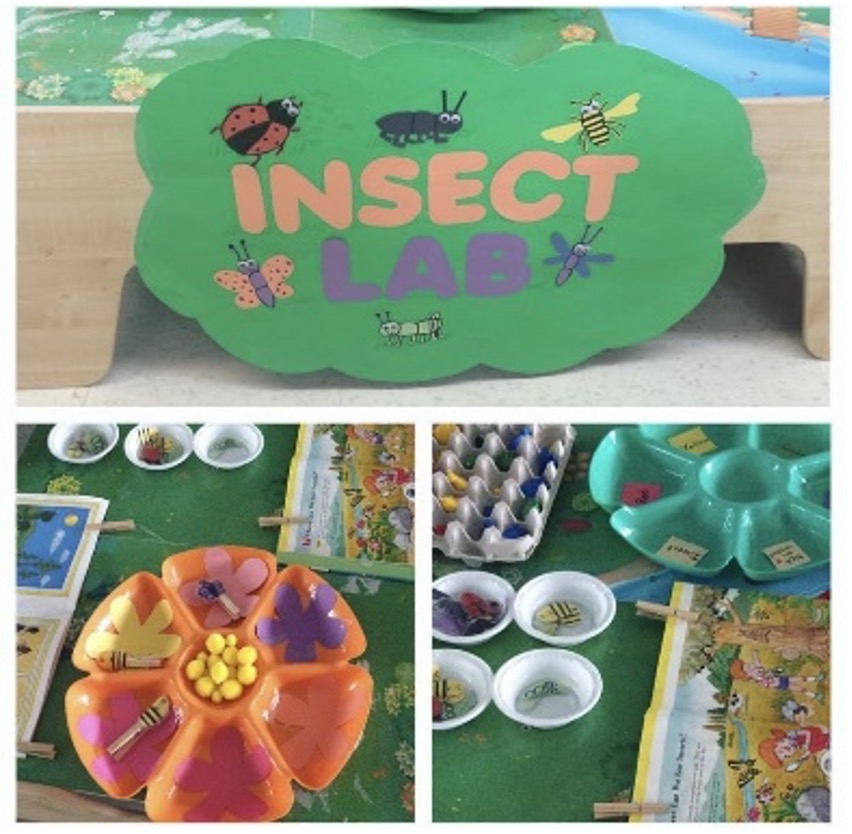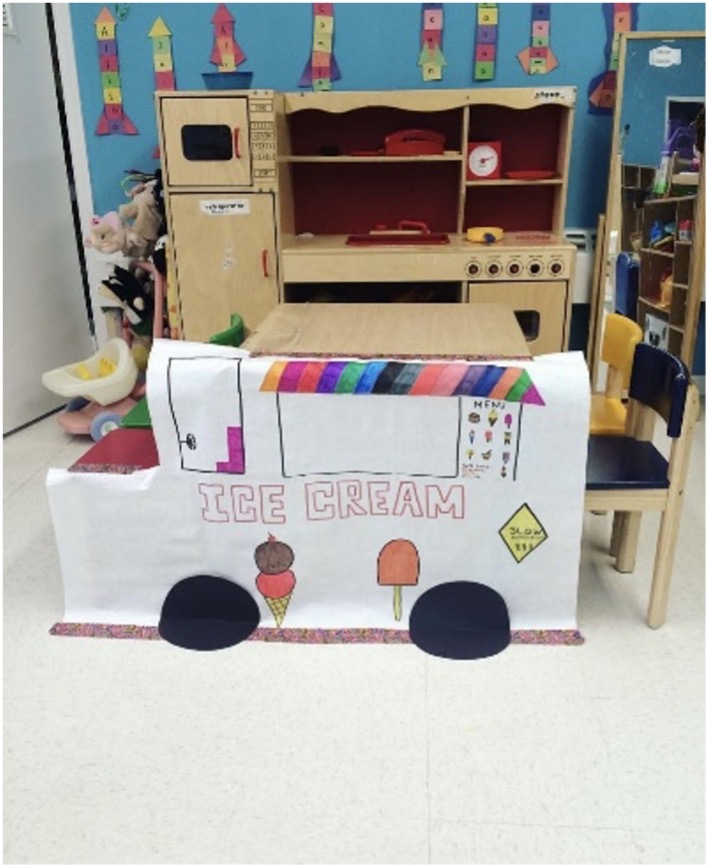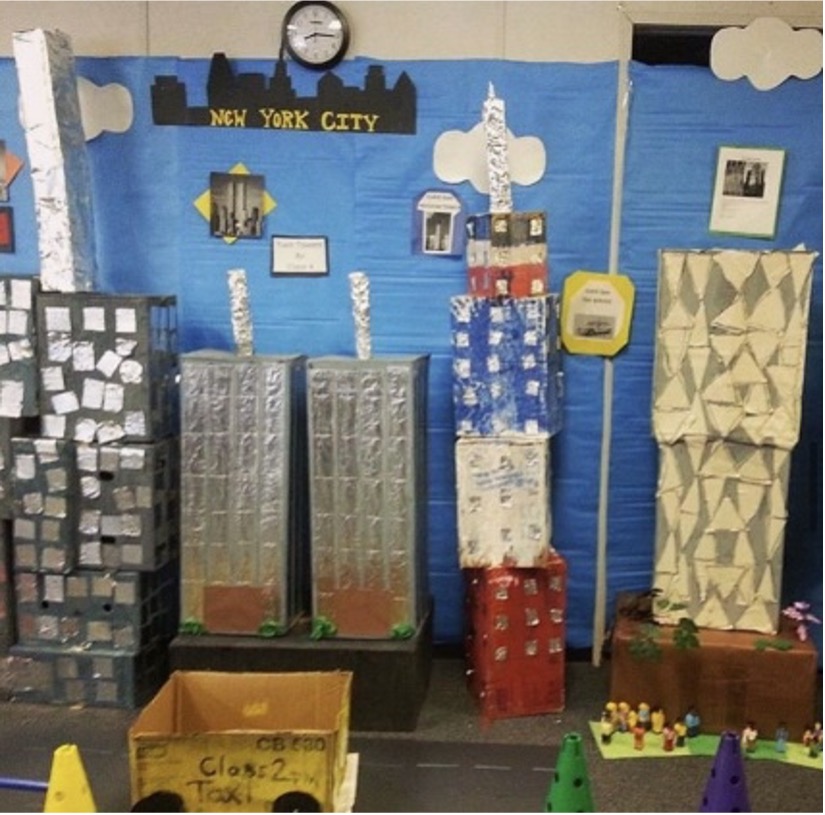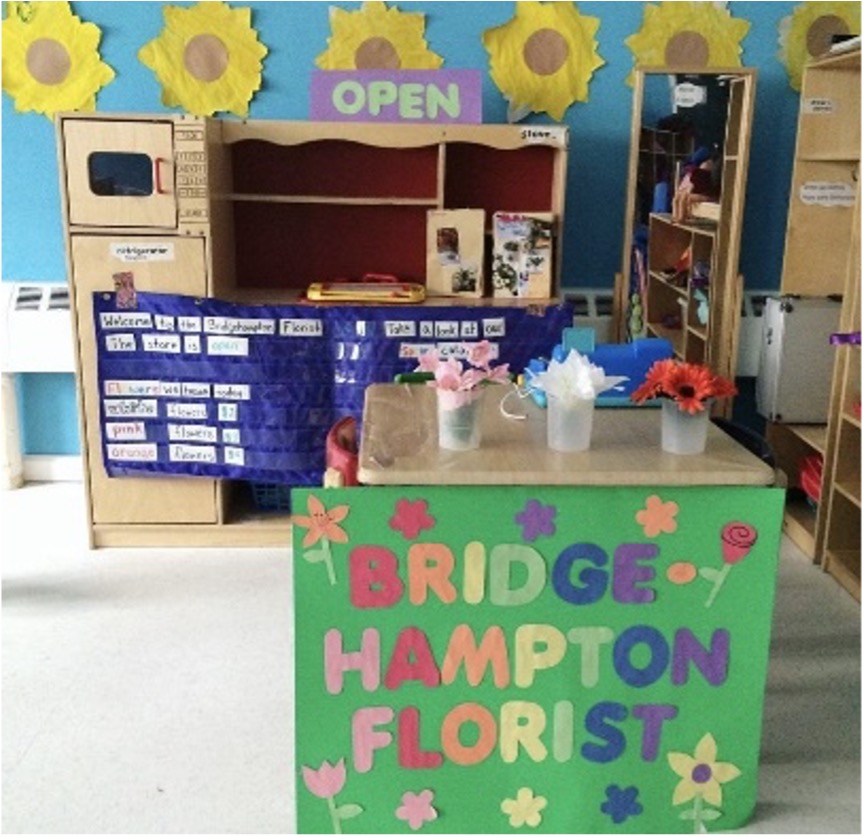Inviting Dramatic Play Back into the “Played Out” Space
by Vanessa Pavelock
View Bio
Library Assistant, Children's & Parents' Services
Vanessa is a former preschool teacher, camp director, and nanny! She currently works as a library assistant in the Children's & Parents' Services Department of the Patchogue-Medford Library. Her passion is play-based learning and interactive, multi-sensory learning experiences and storytimes.
Vanessa holds a Master of Education in Early Childhood Education and a Bachelor of Arts in English/Creative Writing.
-
- Invite your child’s participation
- Use what you have
- Be selective about adding props and materials
- Add books and other print material
- Include writing opportunities
- Don’t limit play to the play area
Creating a dramatic play center is one way to make your child’s small corner of the world feel like a place full of endless possibilities. It is a reminder that imagination can take us to many different places while a sense of wonder can guide our curiosities towards learning.
The potential young children have to learn about the world around them through play is truly and incredibly limitless. As they replicate and recreate scenes, jobs, and actions they see in their everyday life, books, movies, and television, they are filled with more questions (and answers) about how the world works. For this reason, it is crucial that we support and guide children as they play while also finding new ways to ignite their interest in dramatic play.

We have all seen it in classrooms and family homes—an adorable play kitchen complete with play food, wooden dishes, and an assortment of cleaning supplies set aside and collecting dust. The novelty of the kitchen has fizzled out and the play scenarios surrounding the kitchen space have been exhausted.
How many times can you prepare the same few meals, serve them to your family or friends, clean up after them, and still get satisfaction out of the process? Without some occasional changes to spruce up the routine, it quickly becomes played out.
Just as these tasks can become mundane in our everyday lives, acting these tasks out in dramatic play can also become stale and redundant. When a creativeplay center has become played out, it is important to recognize disinterest and find ways to invite play back into the space.
Invite your child’s participation
Including your child in creating a rejuvenated play space encourages their creativity, involves them in the process, provides an opportunity to express their sense of self, and ensures their interest in the newly transformed space. Asking questions like “How can we change the kitchen into someplace new? How can we create that? What materials would we need?” will often inspire inventive ideas while also encouraging critical thinking skills in your child.

Use what you have
It doesn’t take much (in terms of materials) to transform a play space. Children in the age of dramatic play are known to use items to represent something else that is not there. Just because something does not look just like the thing being represented, does not mean it is not serving its’ purpose in dramatic play. We should encourage the child’s ability to think symbolically and work with what they have.
Also, do not throw away the wooden kitchen set, storefront, or other dramatic play furniture you already own. Find ways to use these sets as the foundation or frame for new ideas.
Be selective about adding props & materials
Adding just a few props, dress-up clothes, and signage can easily transform a space into someplace entirely new to a child. These little changes can inspire creative ideas for dramatic play scenarios and reignite their interest in the space.

Although adding a few props and materials can certainly encourage new ways for your child to engage in the dramatic play space, it is also important to leave room for imagination. Offering the materials needed to create new props will often add more value and potential to their play than simply giving them everything they need.
Add books & other print materials
Adding a variety of books to coincide with the dramatic play area is a great way to add play inspiration while also offering your child a resource to learn more about the subject. Integrating books and other print materials in dramatic play also exemplifies the many uses of print.
For example, you could add a reference book about insects in an entomology lab, a weekly circular in a grocery store, a recipe book in a restaurant, a stamp collectors’ book in a post office, a menu on an ice-cream truck, a catalogue in a florist, a pricing chart on a farm stand, a safety pamphlet in an airplane, a brushing guide in a dentist’s office, and so on.
While your child may not read these texts yet, they will use print concepts and context clues to figure out their content and start to integrate these print materials with purpose into their play.

Include writing opportunities
Including a variety of writing materials and mediums in the dramatic play area invites your child to convey ideas and information through writing. For example, adding list paper in a grocery store, envelopes and paper in a post office, receipt slips in a retail store, a reading log in a library, a packing list at a campground, an attendance sheet in a school, a patient’s chart in a veterinarian’s office, and so on. Introducing these materials in connection to your child’s play provides context to their writing and demonstrates the power and many uses of print.
Don’t limit dramatic play to the dramatic play area
Dramatic play in young children is often spontaneous and resourceful. It can happen indoors with many props and materials or outdoors with nothing but their natural surroundings. Whenever and wherever it happens, be ready to engage with your child, get on their level, encourage them to delve deep into their play, and welcome their curiosity. Use the opportunity to build on their vocabulary and communication skills in an organic, approachable manner. Allow their play to be open-ended and child directed. Give them the opportunity to take control, be the captain of their own ship, fly the airplane, solve the mystery, and so on! Dramatic play is empowering, educational, productive, and most of all… fun!